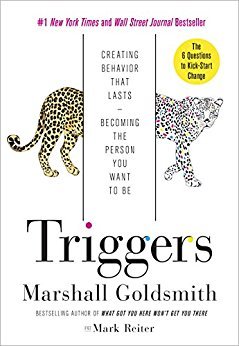More on this book
Community
Kindle Notes & Highlights
Read between
March 11, 2018 - February 12, 2023
1. Did I do my best to set clear goals today?
Did I do my best to make progress toward my goals today?
dispiriting.
3. Did I do my best to find meaning today?
the struggle to find meaning—the struggle, not the result—can protect us in even the most unimaginable environments. It’s up to us, not an outside agency like our company, to provide meaning.
4. Did I do my best to be happy today?
People still debate if happiness is a factor in employee engagement.
we usually find it “in here”—when we quit waiting for someone or something else to bring us joy and take responsibility for locating it ourselves. We find happiness where we are.
5. Did I do my best to build positive relationships today?
The Gallup company asked employees, “Do you have a best friend at work?” and found the answers di...
This highlight has been truncated due to consecutive passage length restrictions.
One of the best ways to “have a best friend” is to “be a best friend.”
6. Did I do my best to be fully engaged today?
paltry
I wasn’t being asked how well I performed but rather how much I tried.
I overate because a client took me to his favorite barbecue joint, where the food was abundant, caloric, and irresistible (in other words, my client—or was it the restaurant?—was responsible for controlling my appetite).
Adding the words “did I do my best” added the element of trying into the equation. It injected personal ownership and responsibility into my question-and-answer process.
I couldn’t simply answer yes or no or “30 minutes.” I had to rethink how I phrased my answers. For one thing, I had to measure my effort. And to make it meaningful—that is, to see if I was trending positively, actually making progress—I had to measure on a relative scale, comparing the most recent day’s effort with previous days.
my first six questions are the Engaging Questions
My next eight questions revolve around cornerstone concepts in The Wheel of Change, where I’m either creating, preserving, eliminating, or accepting.
your Daily Questions should reflect your objectives. They’re not meant to be shared in public
You’re not constructing your list to impress anyone. It’s your list, your life.
Your only considerations should be: • Are these items important in my life? • Will success on these items help me become the person that I want to be?
how questions are posed to interview subjects significantly influences the polling results.
90 percent of all people rate themselves above average—you
When I meet clients, I’m casually forming a “change profile” in my head to gauge how much the clients can take on—and what they should leave for another time. I consider their commitment, their track record of success, and how much social interaction and self-control their change requires.
quantify an unfamiliar data point: our level of trying. We rarely do that. We treat effort as a second-class citizen. It’s the condolence message we send ourselves when we fail. We say, “I gave it my best shot,” or “I get an A for effort.” But after a few days, quantifying effort rather than outcome reveals patterns that we’d otherwise miss.
As the time between planning and doing increases—and our environment intrudes with all its temptations and distractions—our enthusiasm and discipline fade.
discomfiting
winnowed
On Day 63, when she stopped the strict juicing program, Emily had lost 56 pounds.
And so it went for nearly a year during which Emily lost an additional 55 pounds and hit her target weight.
Like each of us, she is always at risk of reverting to previous undesirable behavior.
Daily Questions can be a game-changer. They create a more congenial environment for us to succeed at behavioral change, in several ways.
1. They reinforce our commitment.
Daily Questions are what behavioral economists refer to as a “commitment device.” The questions announce our intention to do something and, at the risk of private disappointment or public humiliation, they commit us to doing it.
Pleasure, devotion, curiosity are telltale signs of intrinsic motivation.
there are many areas where our motivation—intrinsic or extrinsic—is less than optimal. Daily Questions press us to face them, admit them, and write them down.
Behavioral change demands self-discipline and self-control.
Self-discipline refers to achieving desirable behavior. Self-control refers to avoiding undesirable behavior
We reveal our preference for self-discipline or self-control in the way we phrase our Daily Questions.
“Did I do my best to limit my sugar consumption?”
“Did I do my best to say no ...
This highlight has been truncated due to consecutive passage length restrictions.
archenemy
languid
Success is the sum of small efforts repeated day in and day out.
reading off our scores every night to a “coach” becomes a daily test of our commitment—a good thing given our inclination to bear down when we know we’ll be tested.
All of these factors—shame, guilt, cost, obligation, decency—conspire to influence us, solely because of the trainer’s presence. This is how we do what we intend to do. The Coach meshes our inner Planner with our inner Doer. This is how successful change happens: in situations big or small, we make choices that marry intention with execution.


